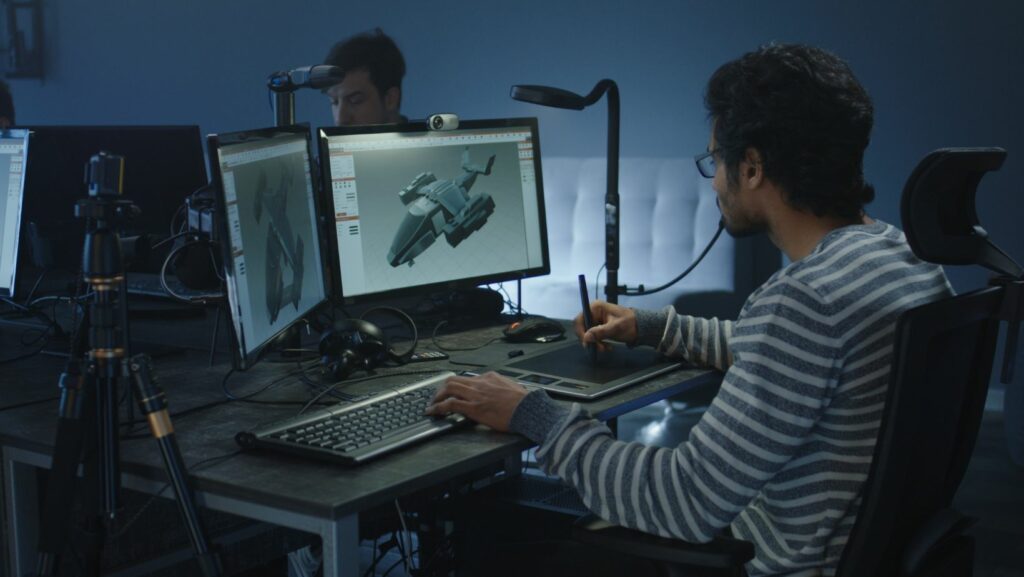Diving into the world of 3D graphics programming in C++ can be both exhilarating and daunting for beginners. With its rich libraries and powerful capabilities, C++ stands as a cornerstone language for developing sophisticated visual applications. Just as Stylish Furniture and Décor Options can elevate a living space, the right coding tools and techniques can transform basic code into stunning visuals. From video games to simulations, mastering this skill opens up a universe of possibilities.
Beginners Guide to Programming 3d Graphics in C++
How C++ Fits into 3D Graphics Programming
 C++ plays a pivotal role in the realm of 3D graphics programming. This programming language facilitates the development of complex graphic applications through its diverse features that support both high performance and extensive control. Major gaming engines such as Unreal Engine and Ogre3D rely on C++ because of its capability to handle resource-intensive applications efficiently.
C++ plays a pivotal role in the realm of 3D graphics programming. This programming language facilitates the development of complex graphic applications through its diverse features that support both high performance and extensive control. Major gaming engines such as Unreal Engine and Ogre3D rely on C++ because of its capability to handle resource-intensive applications efficiently.
Understanding how to utilize C++ for 3D graphics involves learning about key concepts like object-oriented programming (OOP), which seamlessly manages design and data structures. Programmers use C++ to write clear and maintainable code thanks to classes and objects, enhancing the scalability of graphics applications. Furthermore, C++’s ability to work close to system hardware optimizes processing speed, a crucial factor when rendering detailed 3D environments.
Tools and Libraries for 3D Graphics in C++
OpenGL and Its Role
OpenGL serves as a vital tool for programmers engaging in 3D graphics development in C++. It provides a set of functions to directly manipulate graphics hardware, making it a powerful library for rendering 2D and 3D vector graphics. Operating as an open-source interface, OpenGL facilitates direct interaction with a device’s GPU, enabling high efficiency and scalability in graphics processing. Programmers use OpenGL to control geometric transformations and coloring, offering extensive control over the graphical rendering process. The library’s compatibility across multiple platforms ensures that developers can create versatile 3D applications for various operating systems, including Windows, Linux, and macOS. Given its widespread adoption, OpenGL is a crucial component for beginners to explore, as it bridges the gap between complex mathematical concepts and real-world graphical tasks.
Direct3D as an Alternative
 Direct3D, part of the DirectX suite developed by Microsoft, functions as an alternate 3D graphics API predominantly favored in the development of games for Windows and Xbox consoles. It provides tools necessary for the efficient rendering of 3D graphics on Microsoft platforms, specializing in handling complex scenes with multiple light sources and detailed textures. Direct3D supports key features such as hardware acceleration for 3D graphics processing, which substantially enhances performance when rendering high-quality visuals. Its tight integration with other components of DirectX allows developers to manage sound, music, and input, enabling the creation of immersive gaming experiences. For programmers starting in the Windows environment, learning Direct3D offers a valuable pathway to master the nuances of platform-specific 3D graphics development, maximizing system capabilities to deliver visually intricate and responsive applications.
Direct3D, part of the DirectX suite developed by Microsoft, functions as an alternate 3D graphics API predominantly favored in the development of games for Windows and Xbox consoles. It provides tools necessary for the efficient rendering of 3D graphics on Microsoft platforms, specializing in handling complex scenes with multiple light sources and detailed textures. Direct3D supports key features such as hardware acceleration for 3D graphics processing, which substantially enhances performance when rendering high-quality visuals. Its tight integration with other components of DirectX allows developers to manage sound, music, and input, enabling the creation of immersive gaming experiences. For programmers starting in the Windows environment, learning Direct3D offers a valuable pathway to master the nuances of platform-specific 3D graphics development, maximizing system capabilities to deliver visually intricate and responsive applications.
Setting Up Your Development Environment
Setting up a development environment for programming 3D graphics in C++ involves selecting the right tools and configurations. This setup ensures efficient workflow and optimal performance for developing intricate 3D applications. Before diving into programming, beginners must install a C++ integrated development environment (IDE) such as Microsoft Visual Studio or Code::Blocks. These IDEs offer essential features like code completion, debugging, and project management, facilitating the coding process.
Core Concepts in 3D Graphics Programming
 Understanding core concepts in 3D graphics programming is key to success in designing visual software using C++. These basic principles include vectors, matrices, and coordinate systems, each crucial for creating and manipulating 3D environments. Exploring these fundamentals provides the necessary tools to advance in 3D graphics programming.
Understanding core concepts in 3D graphics programming is key to success in designing visual software using C++. These basic principles include vectors, matrices, and coordinate systems, each crucial for creating and manipulating 3D environments. Exploring these fundamentals provides the necessary tools to advance in 3D graphics programming.
- Vectors and Points: Vectors represent quantities having direction and magnitude, critical in defining positions and directions in 3D space. Applications often use vectors to represent coordinates of objects, camera positions, or even lighting directions in a scene.
- Matrices: Employed for transformations, matrices facilitate operations such as scaling, translating, and rotating objects within the 3D space. They play a pivotal role in changing the perspective of a camera or moving an entire scene.
- Coordinate Systems: Understanding different coordinate systems, such as world coordinates, local coordinates, and screen coordinates, ensures that objects are placed and rendered correctly within the 3D world.


